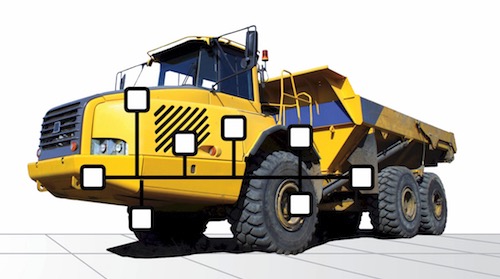Recent Posts
Difference Between CAN Bus and SAE J1939 Data Logger
Posted by on
SAE J1939 has become the accepted industry standard and the vehicle network technology of choice for off-highway machines in applications such as construction, material handling, agriculture, and forestry machines. SAE J1939 is a higher-layer protocol that utilizes Controller Area Network (CAN Bus) as its hardware layer. Consequently, many vendors in the CAN Bus industry claim SAE J1939 compatibility, because their devices support CAN 2.0 A/B, which assures support of 29-bit message identifiers as used in SAE J1939.
The truth is, CAN 2.0 A/B merely addresses the hardware, specifically the CAN Bus controller functionality. In order to fully support higher-layer protocols, such as SAE J1939, you will need additional software to satisfy protocol-specific features.
The common perception is that logging mere CAN Bus data is sufficient, since the data logger will catch all CAN data frames, including those for network management. In case of SAE J1939, that includes data frames dedicated to address claims, message requests, Transport protocol (TP), etc. Nevertheless, you will still need a software to present the information in a readable format. For instance, the Vehicle Identification Number (VIN) is reported by using the TP, meaning, it is segmented over several CAN data frames.
However, the recording of the VIN under SAE J1939 reveals the most serious shortcoming of mere CAN data recording: CAN Bus data loggers can only record what they "see" on the bus; they are not able to send Request messages to obtain data such as VIN (Vehicle Identification Number), Engine Hours, Fuel Consumption, Vehicle Weight, Tire Pressure, Battery Potential, and further parameters necessary for fleet management or ELD applications.
In order to request data, the device must provide its node address, and that can only be accomplished with an onboard J1939 protocol stack. The ability of requesting data also negates the advantages of "Silent Mode," as promoted by vendors of CAN data loggers (Silent Mode guarantees that the device does not engage in any network activity).
Special Requirements for an SAE J1939 Data Logger
Besides the standard requirements (such as message filtering, timestamping, silent mode, baudrate auto-detect, etc.), an SAE J1939 data logger needs additional features that most of the devices available in the marketplace do not provide. They are:
- Full SAE J1939 protocol support (mandatory for message requests)
- Extended temperature range of -40C to +85C (think mining or agricultural equipment in the midwest US or Canada)
- Dust resistance
- Splash water resistance
We at Copperhill Technologies have investigated all these aspects, and we have applied them to our newest development, our SAE J1939 Gateway And Data Logger With Real-Time Clock.
The SAE J1939 Gateway And Data Logger is ideal for vehicle fleet management (trucks, buses, agricultural equipment, and any other diesel engine application), prototype field testing, diagnostics, or reverse engineering.
The SAE J1939 Gateway And Data Logger records SAE J1939 message frames (PGNs) onto an onboard MicroSD memory card and timestamps them with a real-time clock (RTC). Alternatively, it can be used for mere SAE J1939 data monitoring and viewing.
Our SAE J1939 Data Logger comes with an integrated SAE J1939 protocol stack that allows the negotiation of a node address, which is needed to request information from the network. All setup information (message filtering and request messages) is easily set through our free-of-charge Windows software.
SAE J1939 Starter Kit And Network Simulator
Our JCOM.J1939 Starter Kit And Network Simulator is designed to allow the experienced engineer as well as the beginner to experiment with SAE J1939 data communication without the need of connecting to a real-world J1939 network, i.e. a diesel engine. It may sound obvious, but in order to establish a network, you need at least two nodes, and that fact applies especially to CAN/J1939 where the CAN controller will basically shut down after transmitting data without receiving a response. For that reason, our jCOM.J1939 Starter Kit And Network Simulator consists of two J1939 nodes, namely our jCOM.J1939.USB, an SAE J1939 ECU Simulator Board With USB Port.
The jCOM.J1939.USB gateway board is a high-performance, low-latency vehicle network adapter for SAE J1939 applications. The board supports the full SAE J1939 protocol according to J1939/81 Network Management (Address Claiming) and J1939/21 Transport Protocol (TP).
 Loading... Please wait...
Loading... Please wait...


